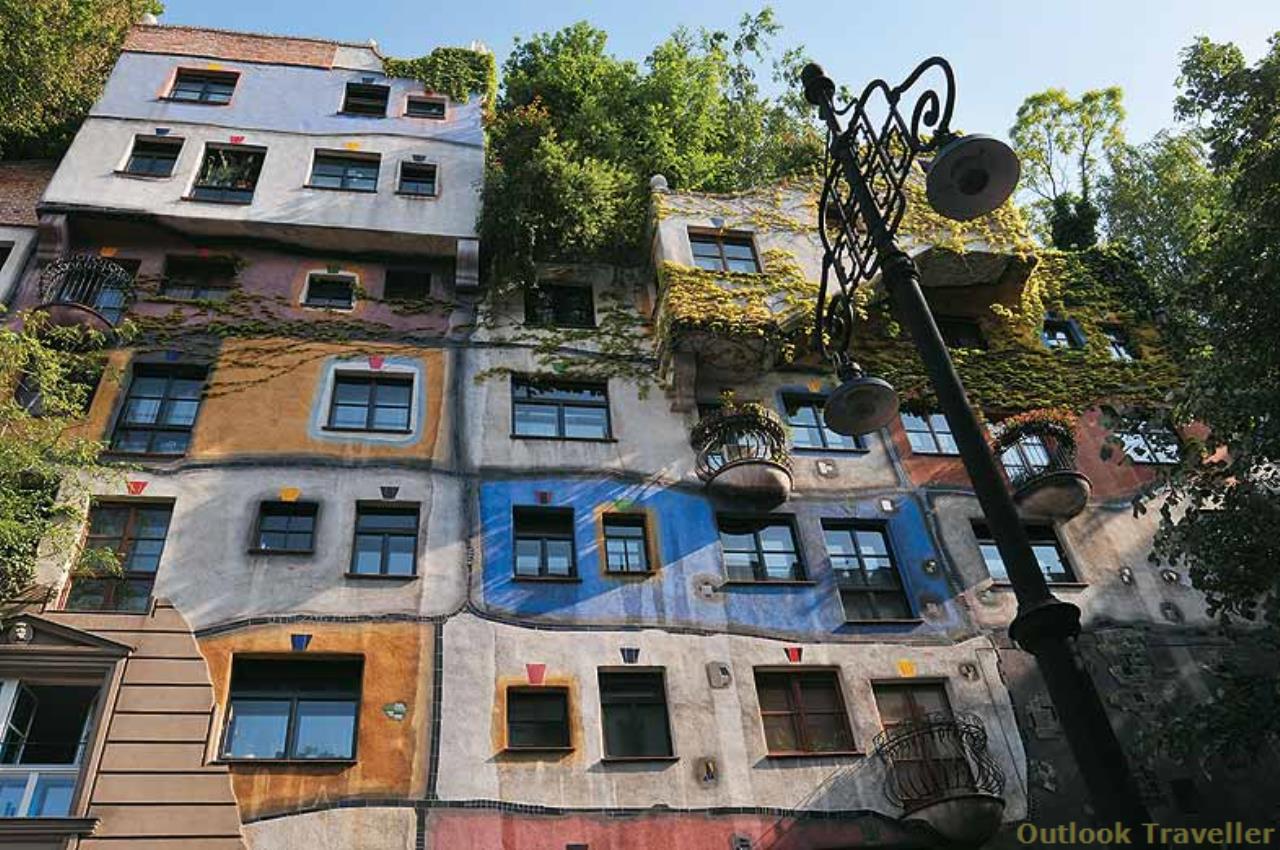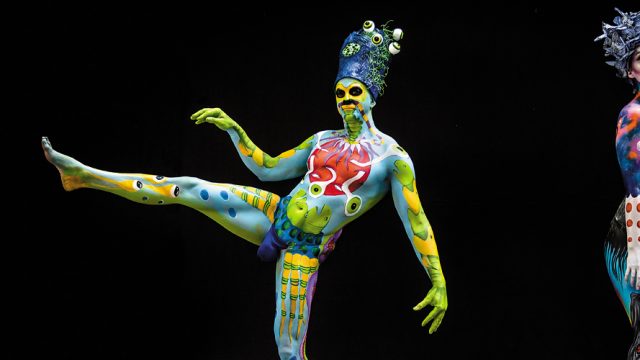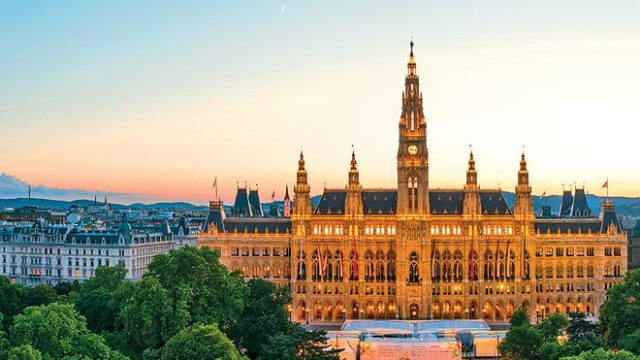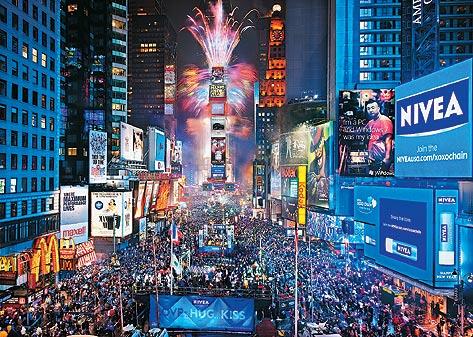It’s that time of year again. When the sub-continent witnesses the vast and inevitable migration of tourists
It is still a matter of wonder for me that you can go to sleep in one place and wake up in another. This wonder can be particularly poignant when you have shrugged off the hot and raging city of Delhi and take a first deep breath of nippy Tyrolean air in the pretty town of Innsbruck in Austria. The photographer and I are whisked away up to Pertisau — and delivered into the warm, pampering comfort of Travel Charme Fürstenhaus, a wellness spa. My room gives out directly on to the 10km-long emerald Achensee lake, surrounded by the imposing Rofan and Karwendel mountain ranges.
Braced by the mountain air and glorious sunshine, we head out for a copious Wiener Schnitzel lunch and as is befitting to the region, pay our respects to the nobility at the charming Schloss Tratzberg castle.
Next, a visit to the shale museum in Pertisau. In 1902, a bright Tyrolean discovered fossil deposits that were over 180 million years old and immediately understood the beneficial properties of its high sulphur content extracts. Behold Tyrolean stone oil, used in a large range of health and beauty products.
Golf is big in little Pertisau. We take a short round in a golf cart of one of its two courses while we are given a sweeping introduction to the village and region, where visitors largely outnumber the residents when they arrive in summer with their boats, cycles and walking sticks or in winter with their skis.
By light that persists late into the evening on a summer day, we have our first soothing sip of Burgenland red at the Golf Club. With wisdom gained over lunch, a dinner of reasonable proportions is ordered, but offset by dessert: fried pancake — Kaisersmarrn — a meal by itself.
The next morning, we set out for a spin, or rather several. First stop, the Karwandel cable car, to access a splendid view from the mountain top — or for the more serious, to hike. I venture for a shot of adrenalin on the Airroflag, a lazier, more sedate version of bungee jumping where you are kitted, hooked and hauled back on cables to a dizzy height and more splendid views before being whisked down to mother earth.
Next stop, Jenbach station — a ride on the proud and pristinely maintained Achensee steam cog train from 1889. We chug up and down the mountain and alight to board a boat that takes us across the Achensee to our lunch at the Gaisalm mountain hut. A leisurely lunch later, we use our own two feet for a brisk hour’s walk around the beauteous lake to return to the hotel.
Undeterred by my failure to participate in any arduous sporting activity, I submit to the languorous ministrations of a stone oil massage, however undeservedly.
Time for a fond farewell to Tyrol. We make a little halt at Wattens, to visit the Swarovski museum, a great draw for Indian tourists. Understandably. We are dazzled as we pass through a series of exuberant chambers, ingenious creations of different designers. All that glitters is wondrous crystal.
For long centuries, Salzburg was quite independent, wealthy with the proceeds from its salt mines and administered by Prince Archbishops who bequeathed a profusion of palaces and gardens to the city. Our guide is justifiably proud of her city.
This baroque city, dominated by the Salzburg castle, took a beating during the wars. Much has been restored but nothing with more pride and presence than anything and everything connected to the great virtuoso, Mozart. With great tenderness for this prolific genius, son of the soil who died at just 35, the house where he was born has been converted into a museum that painstakingly leads us through his short but glorious existence. His likeness is everywhere, down to on chocolate wrappers. Salzburg is a town that is made for strolling with a multitude of museums, galleries, churches, concert halls and markets in easy distance on either side of the bridges over the Salzach river. On our first evening, we are treated to a tourist delight — a candle-lit three-course dinner concert at the crowded Stiftskeller St Peter restaurant. Between courses of ‘period’ food, musicians in period costume deliver arias and duettos from Mozart’s operas with aplomb.
We cannot ignore the other great attraction of Salzburg — the Sound of Music tour. Despite misgivings, the tour is edifying. Most Salzburg residents, like our present guide, were blissfully unaware of this film until persistent tourists prodded them into awakening.
We go around the lake and mountain district, looking at castles, walls, convents, mountain slopes, fountains and villages where filming took place while our guide recounts entertaining anecdotes or trivia, both film- and region-related. Between bouts of sun and rain, we visit quaint St Gilgen (Mozart’s mother’s birthplace) and then the cathedral where the Baron von Trapp ostensibly marries the problematic Maria. Following our dose of the physical tour is the musical one — a highly skilful and captivating puppetry performance to the original score of The Sound of Music. To conclude the day the Austrian way, we dine at a fine hotel that is often considered synonymous with the old world charm of Austria — the Sacher Hotel.
Vienna in a day and a half seems too short even before we have begun. We are staying in the heart of the city at the posh Bristol hotel. Our guide, Diane, whisks us off to the colourful Naschmarkt which will be closed the next day as Sundays are sacred to both the Church and the trade unions. Part of it is a flea market, with bric-a-brac and wares of all description. The other half is devoted to consumption of a purely gastronomic nature with a mind-boggling variety of cuisines on offer, interspersed with stalls selling every manner of vegetable, fruit and delicacy. Diane points out to her preferred wasabi nuts. I introduce her to her first jackfruit, sitting large, foreign and forlorn. We are too late for the famed speciality sausage and cheese shop, but in time for the unexpected wonders of Gegenbauer vinegar with its barrels and bottles of mysterious and marvellous varieties, each distinctive and exquisite.
The sharp tang lingering on my lips, we proceed to partake of other delights, visually. We pass tourists disgorging themselves from the bowels of the earth — apparently a sewer tour (!) inspired by the movie The Third Man, based on a Graham Greene novel. And trot off to the Hofburg Imperial Palace, once residence and office of Emperor Franz Josef and Empress Elisabeth, and where in the not-so-distant past, Hilter had addressed hundreds of thousands from a balcony. We walk and keep walking in the 1st district, past grand libraries, treasuries, museums, stables, riding schools, gardens, each edifice a story, a glory, an intrigue, winding our way down history lane back to the Opera House. This landmark building was considered nothing short of disastrous by the aesthetes of Vienna once — one of the architects apparently committed suicide over the ‘bad press’. Architecture in the late 19th century was emphatically redefined by the Viennese Secession of which a chief protagonist was the artist Gustav Klimt whose bold work can be seen, along with tremendous works of other brilliant painters like Egon Schiele, in the many splendid museums of the city.
A cluster of 20 museums are regrouped in the Museumsquartier. Time is short. We skim past Klimt’s famous The Kiss at the Belvedere palace and several other masterpieces and skid through several galleries at the Museum of Modern Art, lingering at some and with apologies to the rest, before we take a café break to enjoy an apfelstrudel and a moment of ‘gemütlichkeit’ (loosely translated, ‘comfortable leisure’).
We have to make hard choices, but can hardly avoid paying obeisance to the stately summer castle and gardens of the Schönbrunn. We are thankfully in the capable hands of Diane who expertly guides us through the history, gossip, tales of incest and woe with the ease and familiarity of a Habsburg family member! We then tram our way to the offbeat Hundertwasserhaus tenement housing built in the late 1980s, a colourful marvel of crookedness with uneven floors and trees growing out of windows. This wonder drew so many visitors begging residents for a look-see that the government finally opened a Hundertwasser museum in the Kunst Haus to take the pressure off the harassed inhabitants.
Up the road, is a curious little museum in a city of many — the Museum of Fakes, which hosts a delightful little collection of famous fakes alongside copies of the originals, with little write-ups on these pretenders that shook the art world!
We saw more, much more, and there was seemingly no end to it, around every corner, in every nook, every cranny, a slice of history. Impossible to list them all. And I have singularly failed to give space enough to the events on offer, and they are myriad. I will content myself with mention of the two I did attend — the first evening was dinner at the Meinl am Graben. No, I make no mistake here — the meal was nothing short of an event as we worked our way through the ‘testing menu’, regaled with course after course, each accompanied by a faultless Austrian wine, four hours of resplendent gluttony. I have a copy of the menu. I might frame it.
And our second evening, we paid homage, as does Austria this year, to Haydn on the 200th anniversary of his death. We had neglected him (and the other Austrian composers) in every other way — we did not visit his home, museum, haunts. We listened to one of Haydn’s concerts, one of many scheduled this year, in the golden splendour of a packed hall at the Konzerthaus, where the very atmosphere was as awe-inspiring as the performance. At any rate, I was awe-struck, More discerning critics may have noticed a faltering, an indifference, an imperfection — I personally think even Haydn should have been pleased.
Vienna in two days, Austria in six? Not enough, not nearly enough. To borrow the line from Austria Tourism or Billy Joel, ‘Vienna waits for you’. I wait for it too.
Austrian villages
Vienna
Leave a Reply
You must be logged in to post a comment.





